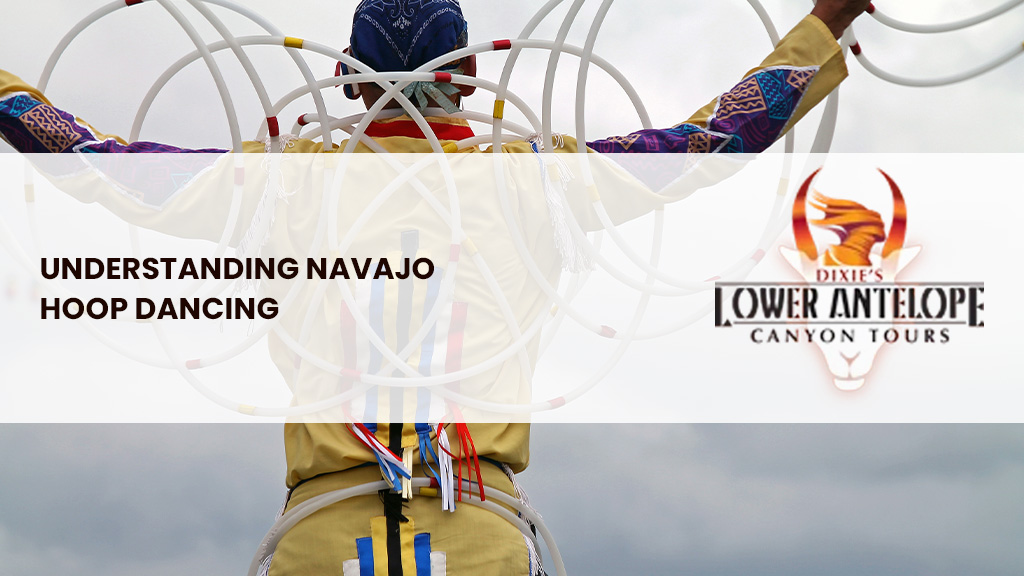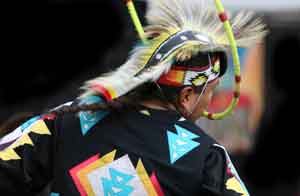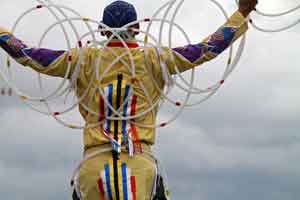Understanding Navajo Hoop Dancing
Most days, visitors to Dixie’s Lower Antelope Canyon get a pleasant surprise while they await their turn to hike through the world famous slot canyon.
Lestin Fuller, a world-renowned Navajo hoop dancer, often performs to the delight of our guests prior to their tour. He has been gracious enough to perform with us for years, and has become one of the most talked-about – and popular – parts of our guided tour outside of Antelope Canyon itself. Lestin is ranked as one of the best hoop dancers in the world, and watching him perform one of the most beautiful, and difficult, traditional dances in the world is truly a once in a lifetime event.
So what exactly is Navajo hoop dancing?
In essence, hoop dancing is a traditional form of Native American storytelling through dance, incorporating one, a handful, or up to dozens of hoops. While the dance varies somewhat by region, it dates back centuries to many tribes.
The art is usually performed by a single dancer (aka like Lestin) who begins the show with a single hoop. This is symbolic of the circle of life. Then additional hoops are interwoven into the dance, creating shapes and symbols representing other life elements. This includes the wind, water, earth, the seasons, as well as all living things – including humans. All of this is performed seamlessly to traditional indigenous music.
The dancer is able to make the hoops seemingly interlock and extend from the body forming appendages such as wings and tails. All while maintaining their balance and rhythm to the sounds of the music.
The hoops themselves traditionally were made from reed or wood from a willow tree, or some other similar tree – depending on the tribe. Of course, today’s dancers use more durable materials like plastic, but decorate them with different colors of paint to symbolize the four seasons.
Hoop dancing is a growing sport
Modern hoop dancing has not only become more widely recognized and popular, it has also emerged as one of the most competitive sports. For over three decades, the World Hoop Dance Competition has been held annually at the Heard Museum in Phoenix, Arizona, featuring the most incredible competitive hoop dancers in the world.
This year, As many as one hundred and eight different hoop dancers, representing more than three dozen tribes (including of course the Navajo Nation) converged in Phoenix to see who can lay claim to being the best of the best.
Hoop dancers are divided into age categories and are asked to perform to different tempos and styles of traditional indigenous music. They are judged on five specific qualities during their presentations: speed, precision, rhythm, creativity, and, of course, showmanship. In 2023, Scott Sinquah (Gila River, Pima, Hopi-Tewa, Cherokee, Choctaw) took home the top prize, and title of Hoop Dance World Champion.
Please be respectful
While it may be very entertaining for visiting tourists to Lower Antelope Canyon, it’s important to keep in mind that this dance holds immense cultural significance to indigenous people, as the performance itself is considered sacred. Please never touch or interfere with the hoop dancer in any way while they are performing, as it is considered disrespectful and sacrilege. And please do not touch the hoops unless the dancer gives explicit permission – even if they are just laying on the ground.
We look forward to you seeing this incredible, moving, spiritual, immersive dance for yourself on your next visit to Dixie’s Lower Antelope Canyon Tours!



